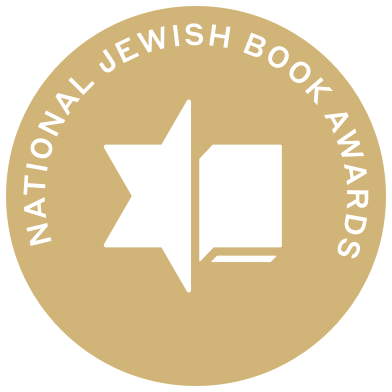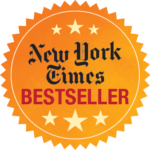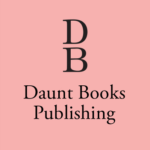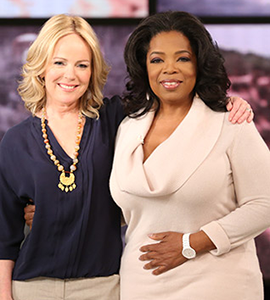In and Out of the Cave
This is how I’ve come to think of it. When I’m writing, I’m in the cave. When I’m not, I’m blinking in the sunlight. Sometimes it’s difficult to emerge. Other times, it’s torture to go back into the darkness. The other day, I was in New York, making a promotional video for an upcoming anthology for which I wrote an essay. A bunch of the writers in the anthology arrived at the publisher’s office wearing their chic, black tops, as instructed. A make-up artist was there to touch us up. And as we sat in a conference room being prepped and powdered, I had a strong sense of being in a room filled with kindred spirits. Some of us were friends. Some of us had…how shall I put it…histories with each other. But what all of us had in common was that we’re people who spend most of our lives in a semi-hermetic way, and that this–the conference room, the platter of cookies, the bright lights of video cameras–was not where we lived, even though it was fun. I’m always struck by how odd my life is, when I find myself in an office building. People get dressed for work! They have meetings and lunches and they talk to other people all day long!
As I write, I’m in my bathrobe. It’s nine-fifteen on a Thursday morning. My half-finished second cappuccino of the day is to my right. My manuscript to my left. A bookshelf is within reach, piled with books relating to Devotion. Emerson, Thoreau, Jung, Dillard. Books by Buddhists, Rabbis, memoirists, psychoanalysts, philosophers. To my right, on the floor, three piles of manuscripts for an anthology I’m guest editing. Yet another pile of manuscripts for the Sirenland Conference is in the corner. One dog sleeps on my comfortable reading chair. The other one is down in the kitchen, hopefully not getting into too much trouble. The house is quiet. I can’t tell yet whether this will be a good writing day, a just-okay one, or an abysmal one from which I will emerge frustrated and depressed. I can’t possibly know that. All I can do is to sit down to write. To slowly find my way back into the cave.
Two Steps Forward, One Step Back
I think one of the hardest things to accept in life is that nothing remains the same. I remember, last year, when we were in Positano, Italy for the Sirenland Conference, we were staying in the most magnificent room with a bathtub overlooking the Tirreno Sea, and our first night there, I found myself melancholy: a week from now, we will have to leave this room, was my thought. I will never be in a room this beautiful, ever again. Instead of simply living in the moment, I was already mourning the moment passing. I knew I was doing it–but I couldn’t stop myself. Watching my son Jacob grow and change is a big part of the process of understanding that life speeds by. Just yesterday, I stood and watched him on the monkey bars after school. While he swung easily from bar to bar, I was aware that even six months ago, he couldn’t have navigated the monkey bars. What will he be doing six months from now? Six years? In the area of Connecticut where we live, this year’s crop of Eighth Grade boys are looking at boarding schools for next year. When we moved to Connecticut, those boys were all younger than Jacob is today.
Everything changes. It all whizzes by so fast. As I work on Devotion, I’m increasingly aware of this, because the process of writing Devotion is one of slowing down. Of opening myself to the truth of what is. But slowing down is not the same thing as freezing time. There is no freeze-frame in this life of ours. Just a constant adaptation. We begin again. We re-invent. We plow forward, two steps forward, one step back. In the words of the great Buddhist teacher Jack Kornfeld: this too, this too, this too. It’s a journey that is changing me in good ways–but also in painful ones. At times, I feel like the Velveteen Rabbit. Rubbed raw.
Being a Jewish Writer
I had never known that November is National Jewish Book Month until, a couple of years ago, when I started receiving requests to appear at Jewish Community Centers around the country to talk about my work. I have always thought of myself as a writer who is Jewish, rather than a “Jewish Writer” — in the same way I’ve thought of myself as a writer who happens to be female, happens to be a wife and mother, happens to live in rural Connecticut. I’ve resisted being categorized–even though we live in a world that loves to label, and certainly I have been labeled all these things. But does it matter? My work reflects my Jewishness, in the sense that, as a child, I was steeped in religious observance. I frequently say, these days, that I know I’m ready to start a new piece of work when my own personal mishegas meets up with a big idea. Certainly my mishegas has to do with my Jewishness. How could it not? I am suffused with it, as I am with family life. And so I am a Jewish female writer, a wife and mother who frequently writes about Jewishness and family life. And, now that we’re into the month of November, I am traveling to various communities around the country to talk about the relationship between my life and my work. Last week I visited a wonderful JCC in New Jersey where, in the audience, there were many faces from my New Jersey past. Parents of my grade school friends were there. Neighbors from my home town. It was a very warm feeling–a feeling that I increasingly value–of being connected. These connections never really completely disappear, no matter how many years pass. Tomorrow I will be in Scottsdale, Arizona–far from home. And though I don’t imagine that I will run into people I know from the distant past, I have no doubt that the same warm feeling will fill the room.
Writing Days
The truth is that I can tell what kind of writing day I’m going to have within the first half hour of sitting at my desk. If I have just ordered socks, turtlenecks and thermal underwear for Jacob from the Land’s End Catalogue, I’m probably not heading in the right direction. (Best to leave these online shopping sprees for the wee, sleepless hours.) If I have found myself on my favorite fashion website, salivating over an unaffordable pair of Chloe boots (since when did $1200 become the new $600?) I am also, most likely, not heading in the right direction. Ditto, if I am answering emails. Ditto, if I am reading too much of the morning’s news.
Lately I have been opening my treasured copy of Virginia Woolf’s A Writer’s Diary which I always keep within arm’s reach on my desk. I open it randomly, like the I Ching. It always has a message for me. Yesterday, Ms. Woolf had this to say: “Writing becomes harder and harder. Things I dashed off, I now compress and re-state.” As so often is the case, I felt a shock of recognition. This is what no one could have told me as a young writer–I wouldn’t have believed it. It gets harder. The more I learn, the more I know, the more I am aware of the scope of my own ambitions and the limits of my abilities and that crushing place where the two meet. I am tougher on myself. I don’t fall in love with my own words–ever. Long ago, when I was writing my second novel, I used to carry around manuscript pages with me–not to edit them, but (embarrassingly) because I loved them. This love should have tipped me off that I wasn’t doing the hardest work of all. Once, Grace Paley said that if she loved a sentence she had just written enough to get up from her desk and go read it to her husband, she knew she had to cut it.
Now, at this very moment, I will open up A Writer’s Diary and see what Ms. Woolf has to say for today: a bulletin from 1927, here it is:
“The dream is too often about myself. To correct this; and to forget one’s own sharp absurd little personality, reputation and the rest of it, one should read; see outsiders; think more; write more logically; above all be full of work; and practise anonymity.”
Succumbing to Dismay
Today is Yom Kippur, and probably blogging is somewhere high up on the list of what you’re not supposed to do on Yom Kippur. In the Orthodox Jewish family of my childhood–if blogging or computers had existed–this very act would have broken a series of prohibitions. The use of electricity, for one. Writing, for another. Not to mention removing one’s focus from the holiness and importance of the day.
But I am actually thinking about the holiness and importance of the day. Last night, Michael, Jacob and I went to Kol Nidre services at a synagogue I’ve finally discovered in my search for a place to belong as a Jew here in Cheever country. It’s been a long (six year long!) road, but finally I have found a sanctuary where I feel spiritually at home. And because I feel so comfortable there, I found myself able to listen, to really listen to the “ashamnu” prayer which is central to the Kol Nidre service. This is the prayer that always scared me half to death as a child, and even as an adult. As God flips through the pages of the Book of Life and makes decisions about the fate of each and every person in the coming year, we beat our chests and admit our sins. The language of this list of sins is disconcerting: we have stolen, we have committed adultery, we have become violent, we have been contemptuous, we have rebelled. We have been wicked, stiff-necked, immoral. Last night, somehow, these words felt the way I think they’re supposed to. They were not necessarily my personal confessions, but the confessions of an entire people. An entire community, a world of humanity, admitting their frailty.
Finally, though, it was this sin that popped out at me: For the sin of succuming to dismay. If there was ever a moment to understand this as a sin, or a failing, it seemed a good time to recognize it. To feel dismay is not a sin. The sin is to succumb to it. I held the thought like a small stone in my pocket, fingering it, returning to it on the drive home.
But then we returned from services and walked into the kitchen to discover that Samson the Labradoodle pup had managed to pull the half-eaten challah off the kitchen counter, and had eaten the whole thing. Bits of saran wrap covered the kitchen floor. We called the vet to be sure the dog wasn’t in danger. And I tried not to succumb to dismay.
Fork in the Road
The other day, while messing around on Facebook (one of my new and most favorite forms of procrastination) I went on my husband’s Facebook page to see what was new with him, since we barely ever get to talk to each other any more because of 4th grade homework and the new puppy. I noticed that Michael had added a link to a video he had also posted on YouTube, called “Flying Qat into Mogadishu”. Qat being a plant found in parts of Africa which, when the leaves are chewed, apparently gives a person a mild, cocaine-like buzz. And Mogadishu, Somalia being the place that owned Michael’s heart before he met me. He was flying with his friend Josh on the small drug plane onto a dirt runway south of Mogadishu controlled by the son of an infamous war lord (is there any other kind of war lord?) because there weren’t very many ways for journalists to get into the country during that time. As I watched the video below–the laughing pilot, the tiny strip of dirt appearing below them, the men casually holding their assault rifles approaching the small plane–I noticed the date. It was August, 1996.
Michael and I met on the first day of November, 1996–less than three months after the adventure on the qat plane. He was still jet-lagged, having just returned to New York from Africa, where he spent most of his time as a foreign correspondent. We were introduced by a mutual friend at a Halloween party near Gramercy Park, we fell in love on the spot, and now we live with one child and two dogs in bucolic New England. This is what our lives look like now:
I’ll never be able to explain it. But that improbable meeting nearly twelve years ago has been the greatest piece of good luck in my life. Still, as I watched the video Michael shot as the plane descended through the clouds toward the dirt strip, my breath caught in my throat. Please land safely, I thought. Come home so we can start our lives together. Please.
A Very Good Idea
A couple of weeks ago, I received group email from the novelist Ayelet Waldman asking fellow writers to send her signed copies of their books for a Barack Obama fund raiser. Usually, when I know I need to send someone a book, it takes me a little while. I get daunted by the envelope (I never seem to have the right size of padded envelope no matter how many trips to Staples I make), the postage, the whole thing. I need an assistant and don’t have one, and probably never will. Sigh. Anyway, this time I was obsessed; I couldn’t get a copy of Black & White to the post office quickly enough. I also forwarded Ayelet’s email to a bunch of my writer friends, asking them to do the same. Before I knew it, writers as disparate as Jamie Lee Curtis, who sent her children’s books, and Jane Green, who sent her massively bestselling new novel The Beach House, also couldn’t get to the post office fast enough. And just this morning, I discovered that a website has been created: books4barack.com
Over 750 writers have contributed their books. And Ayelet is sending a randomly-assembled basket of goodies (there are Alice Sebold first editions, Stephen King, Tobias Wolff, Alice Waters, you name it) to people who contribute $250 or more to Obama’s campaign.
Check out the website. And go Ayelet! I just love when a brilliant idea takes off.
Tefillin
Lately, I’ve realized that experiential non-fiction books can be divided into two categories: in the first, a writer sets out to experience something in order to write about it. And in the second, a writer has always wanted to experience something, but is frightened/resistant/anxious/doesn’t feel she has any right (or all of the above) and so goes out, gets a book contract, and no longer has any choice in the matter. This is the category into which my new book falls. I have been on some version or another of a spiritual quest since the day I fled my Orthodox Jewish upbringing. But these quests of mine always stopped short. Or rather, I stopped them short. Given the pure, undiluted dose of religion that governed my whole childhood, anything that smacked of organized religion made me wary. And anything that didn’t (yoga, meditation, chanting, twelve step programs, you name it) struck me as not my territory. I couldn’t be Orthodox, and I couldn’t be otherwise. Which left me exactly nowhere.
Ever since I’ve embarked on this internal journey, I find that I recognize my teachers when I meet them. I also find that I stumble across potential teachers more frequently, because I’m on the lookout. Stephen Cope, Sylvia Boorstein, Burt Visotzky. These extraordinary thinkers and teachers have crossed my path because I have allowed myself to be on a path where I might meet them. And in my openness to them, they have been open to me. An extraordinary piece of luck on my part. Would I ever have had the nerve to get to know these people? Would I ever have felt that I had the right? Would I have been willing or able to accept their grace and generosity towards me–without the handy excuse of a book I’m writing? I would like to think that I might have. But I know better. This book, much like the New Yorker piece I wrote years ago about my father’s secret past, is something I have been desperate to do, but too afraid to find out what would happen if I opened myself up to the possibilities.
At the beginning of the summer, I joined Rabbi Burt Visotzky for coffee on the Upper West Side. We met at Cafe Edgar, one of my favorite haunts and the place where, many years ago, I used sit for hours and hours talking about writing with one of the people who saved my life, the novelist Jerome Badanes. Jerry died suddenly and tragically of a heart attack in his mid-50’s, and every time I am in Cafe Edgar I think of him and his profound influence on my life. So there I was with my new Rabbi friend, and he was asking me about Devotion. It felt like layers of my life were in that room.
Devotion is part-memoir, part-journey, I said. A bit like a puzzle, or a quilt. I’m writing about where I come from, and how my Orthodox childhood impacted my life and coming to terms with a relevant, realistic, meaningful way of incorporating all the complicated bits. For instance, I just wrote a short chapter, a childhood memory about watching my father lay tefillin each weekday morning before he said his prayers.
Do you still have your father’s tefillin? Burt asked.
Yes, I said. Picturing a midnight-blue velvet pouch somewhere in my basement.
Have you ever put them on?
WHAT?
I felt like Burt had suggested something heretic. Something boundary-crossing and impossible. Put on my father’s tefillin?
But I’m a woman, I said. Stating the obvious.
Women have worn tefillin throughout history, Burt said. It’s written in the Talmud that Michal, wife of King David, put on tefillin and the sages did not rebuke her.
And so Burt made me an offer I couldn’t refuse.
If you want, I will teach you, he said. And so, a few weeks later, in his small, book-lined office in the Jewish Theological Seminary, the brilliant Rabbi took a couple of hours out of his day to teach a spiritually yearning, still-grieving daughter to wear her father’s tallit and tefillin. I wrapped myself in the shawl of my father and said the blessings I had heard him say every morning of my childhood. I cried as I breathed in the musty scent of the fabric not worn in over twenty years. And though I knew that my father would be slightly horrified at a woman wearing a tallit and tefillin, I wondered if maybe he might also be just a tiny bit proud of his daughter, trying to find her way.
The Osteopath
Several times over the past six months, I’ve driven nearly an hour to the sweet little town of Sharon, Connecticut to pay a visit to an osteopath. I didn’t even know what an osteopath was (bone doctor?) but a friend of mine told me I had to go see this guy. I was waking up in the mornings with my jaw aching from clenching my teeth in my sleep. (Tension, anyone?) My friend promised me that the osteopath would cure me.
Here’s what happens during a typical visit. I lie on a table, and the osteopath holds my feet. Then, after about five minutes, he moves his hands–sometimes to my sacrum, or the middle of my spine, or my pelvis. Eventually, he ends up cradling my head, manipulating my jaw with a barely discernible pressure. And as I lie there, I fight my own resistance to the process. What is he doing? How can this possibly help? Hokum–pure hokum. Some kind of weird placebo effect. But then, after my cynical mind shuts up, I become aware that I am floating. Feeling…sort of amazing. Almost euphoric. Deeply relaxed. The rock-hard tension in my jaw has evaporated.
The other day, after he had finished working his magic, I asked the osteopath how it had happened: how was it possible that by lightly touching my feet, or my spine, or my head, he had cured me? It had been months since I’d woken up in the morning with an aching jaw.
Things get stuck, is what the osteopath said with a small shrug. All I do is guide the body to un-stick them.
Things get stuck. What a beautiful, perfect understatement. In all the reading I’ve been doing, and in my yoga practice, I know this to be true. Things get stuck in the body, and then we need to find ways to release them. Grief, memory, trauma, pain never go away. Our histories are alive inside of us, flowing like the tide. Just yesterday, Michael has been cleaning his office–years-worth of papers and letters and old photos surfacing–and he pulled out an envelope stuffed with the awful, tortured correspondence I had with my mother in the last years of her life. I started looking through the page and pages of faxes (yes, my mother communicated with me by fax) and letters, and felt it all going somewhere inside of me–to a place where all that lives. It’s not that I think of it every day. I don’t, not even remotely. But that doesn’t mean that it isn’t there.
The Process
Sometimes a student, or a beginning writer, will tell me that she only writes when she feels inspired. I’ve given this a lot of thought–and practical application–over the years, and have come to the conclusion that if I only wrote when I felt inspired, I would have written, at the very most, one extremely slim volume by now. No. From the beginning, I have kept regular hours. Monday to Friday, 9-5, more or less. Weekends and holidays off. The idea of working in the middle of the night, or on a sunny Saturday, or on a holiday, makes me feel too out-of-step with the rest of the world. And, as a writer, I already feel out-of-step enough.
The process of writing Devotion, though, has been different thus far than any of my previous books. It’s very stop-start, push-pull. It’s by far the hardest thing I’ve ever done. Friends tell me that I say this about every book, but this time it’s true. The nature of this memoir/journey dictates that I be extremely solitary and quiet in order to do the writing, but at the same time live in the world and experience life to its fullest. I feel excruciatingly open–as if I have one less layer of skin than everyone around me. Sensitized, quivering, alert to every nuance. It’s sort of a great way to live, though some times it gets a bit too intense. But again, that’s the nature of this book. I’m traveling inward, diving deep into the middle of the middle of life, then trying to articulate what it is that I find there. Whoever said that’s supposed to be easy?
John Gregory Dunne once described writer’s block as a failure of nerve–nothing more, nothing less. Nothing mystical about it. When we write, it means that we have overcome our own fears, our own inner censoring voices, if only for that minute, that hour, that day. And then the minutes and hours and days pile up, they accrue, sticking to each other as they become weeks, months, years–stories, poems, novels, memoirs in the making. In writing Devotion, I am learning that anew. Each day, I overcome my resistance. I watch the self-defeating questions float through my mind: why me? what right do I have? why do I think I have anything to say about this that hasn’t already been said? On good days, I treat these questions the way I treat random thoughts during my meditation practice. Oh, yeah. You again. Okay. Thanks for sharing. Now go away.





















